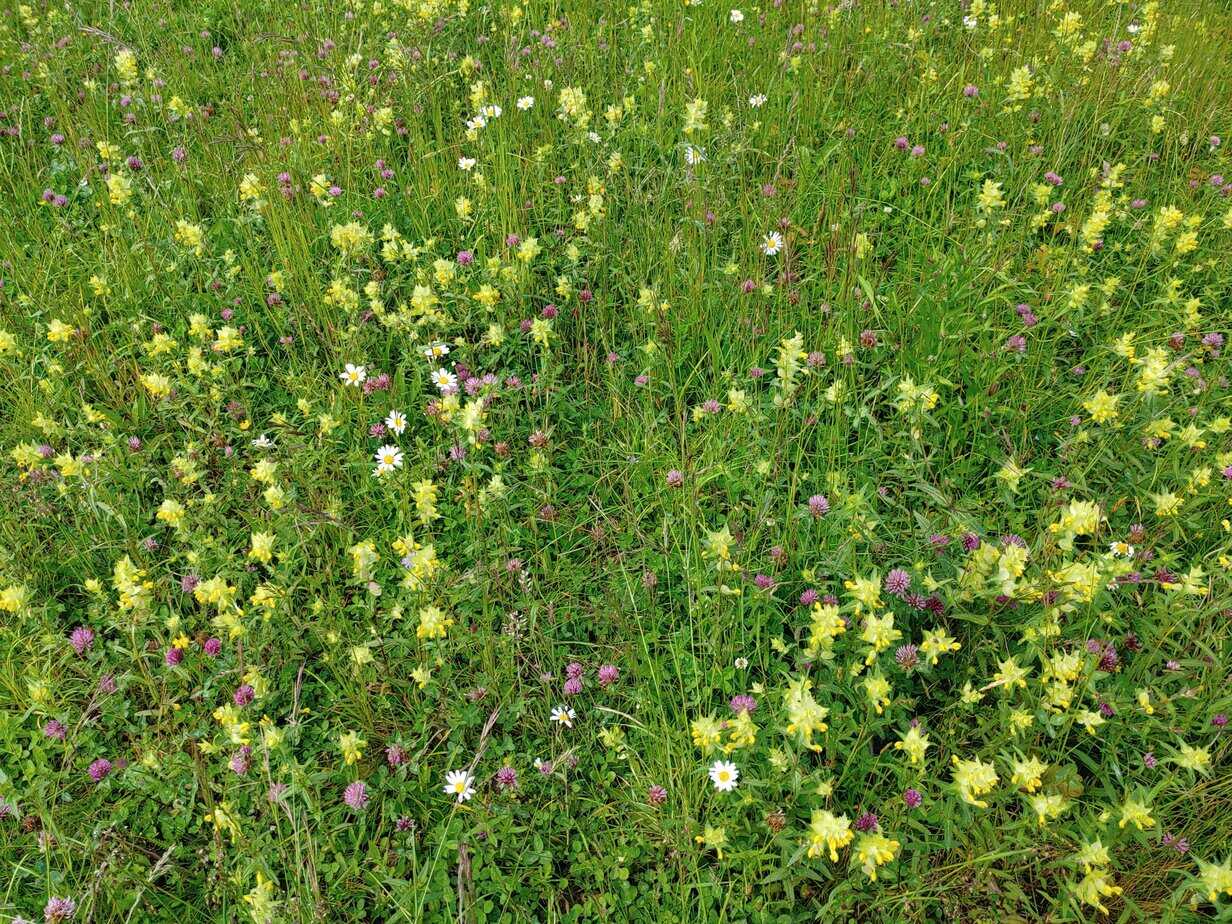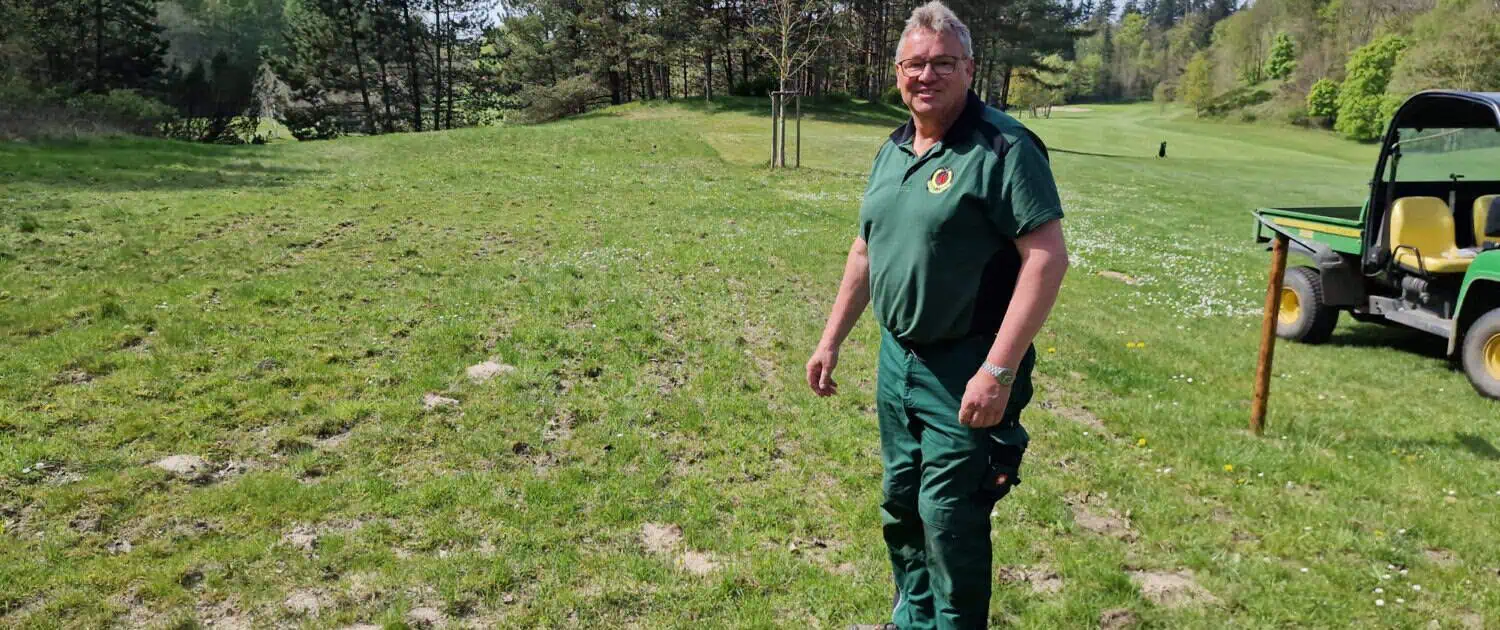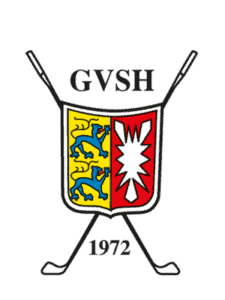It’s all about colours – the more colourful the meadow, the more important for biodiversity. Many greenkeepers who work with flowering meadows on Schleswig-Holstein’s golf courses struggle with this misconception among many golfers. Bright red poppies or lush yellow sunflowers are real eye-catchers on the golf course – but their value in terms of biodiversity is rather low because they are fast-germinating, cultivated seeds that are not typical of the location and also die after a year.
That’s why head greenkeeper Kai Schmuck stands in front of one of his four new flowering meadow areas at Altenhof Golf Club and takes a critical look at what’s there. “We started creating areas for flowering meadows four years ago, almost 10,000 square meters in total,” he notes. The seed comes from the German Association for Landscape Conservation, which is promoting the creation of species-rich meadows in Schleswig-Holstein until 2026. GC Altenhof is just one of several courses that have joined the funding program.
Schmuck was thus relieved of the task of selecting the seeds for the flowering meadows. Instead of a seed mixture with annual seed from the DIY store, which is often used as a low-cost solution on golf courses, he was supplied with regionally adapted seed. Perennial flowering meadows with site-specific seeds have integrated so many species that continuous flowering periods are guaranteed over several years and several months of the year. This means that even specialized insects, such as wild bees, can find enough food in one area. Soil creatures such as spiders, birds and small mammals are also supported because their food supply is also increased.
Germany needs high-quality meadows
Germany lacks areas with such high-quality meadows. This was also the core statement of a ruling by the European Court of Justice on November 14, 2024, which contained a reprimand for the Federal Republic of Germany. In many regions with so-called lowland meadows or mountain meadows, there is too much fertilization and too much mowing. According to the highest European Court of Justice for administrative law, the size of high-quality areas is decreasing. According to the ECJ, Germany is therefore in breach of EU law.
The development of high-quality meadows therefore plays an important role on Germany’s golf courses. “At most golf courses, we see a fundamental desire to manage the land in such a way that biodiversity can develop,” says Dr. Gunther Hardt, Chairman of the Biodiversity Working Group of the German Golf Association.
Subscribe to our newsletter!
News & trends about sustainability in golf
However, implementation is anything but easy, as Schmuck has discovered. He first prepared the almost 10,000 square meter area for sowing. The existing grass was removed, the area milled over, as many roots as possible removed and only then sown. “However, the grass was and still is very dominant,” he says, describing his experiences. With the help of the German Association for Landscape Conservation, he is now planning a maintenance program in the autumn that will attack the remaining roots of the grass so that the other species can establish themselves better.
Despite using the right seed, there is no guarantee of success for the creation of a species-rich meadow. This is also confirmed by Dr. Sandra Rojas-Botero, project manager of Golf Biodivers at the Technical University of Munich, who, together with the universities of Kiel, Freiburg and Münster, has been researching the best conditions for the establishment of species-rich meadows on golf courses over a period of time. With regard to the reseeding of areas, she explains that failures are also possible “if the soil was too rich in nutrients, for example, and the grass dominance is then far too high”. She also knows the biggest challenges when optimizing areas: “The aesthetic demands on the green areas and the expectations of those responsible and golfers can be a problem.”
That brings us back to poppies and sunflowers. An eye-catcher at first glance – but greenkeepers and golfers at Altenhof Golf Club are now well aware of this: This is not a real added value for biodiversity.








 Foto: GC Lauterhofen
Foto: GC Lauterhofen